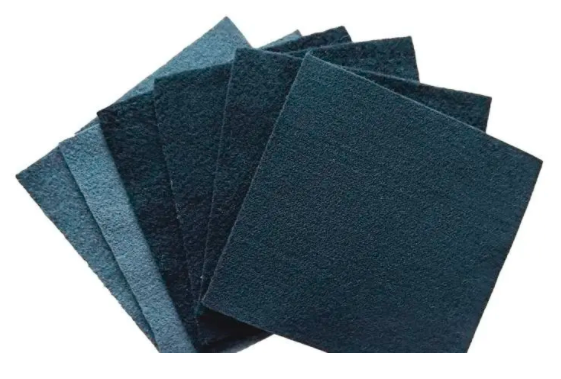- Understanding the Role of Geomembrane Liners in Waste Management
- Innovations in Geomembrane Liners for Water Management
- Geomembrane Liners: A Comprehensive Guide
- The Future of Geomembrane Liners in Civil Engineering
- Geomembrane Liners: Enhancing Landfill Stability
Manager:
WhatsApp:+86 177 0135 2670
Tel:+86 177 0135 2670
Email:marketing@okorder.com
Address:3rd Floor, No.2 Building, No.1 Sanlihe Road
Geotextile Fabric: the Silent Hero in Modern Engineering
Amidst the intricate choreography of modern engineering where nature meets human intelligence, geotextile fabric is the quiet hero. This adaptable weave of ingenuity and practicality plays a silent but vital role in numerous applications, right from soil reinforcement to erosion control. As we navigate through the labyrinthine world of geotechnical and environmental engineering, we should recognize the indispensable contributions and unseen strength that lie within this geotextile fabric.
The Weave That Can Change
Geotextile fabrics are permeable synthetic textile materials used extensively in civil constructions. Made mainly from polyester or polypropylene polymers, this fabric is designed for enhancing soil stability, providing for erosion control and facilitating drainage. It’s a material without limits as it could be made to suit diverse works ranging from grandest infrastructures to minutest environment friendly solutions.
A Glimpse at geotextile types
The diversity of uses served by Geotextiles has led to a wide range of such materials. In essence there are two types; fiber-based geotextiles and fabric-based geotextiles. Fiber-based geotextiles can be made from natural fibers like jute, sisal, flax, hemp, abaca, ramie or coir which have high strength modulus. These fibers not only provide structural integrity but also contribute towards sustainable engineering projects.
Weaving Strong Threads: Woven Geotextile Fabrics
woven geotextiles are manufactured using traditional weaving techniques which result in a patterned interlocking thread structure. This type of geofabric is known for its high tensile resistance as well as puncture strength making it perfect for applications requiring a strong durable fabric. Also its woven nature makes it suitable for projects involving flow of water over subsurface because it offers both strength and permeability.

The Bonding Process of Non-woven Geotextile Fabric
On the other hand, non-woven geotextiles are produced by joining continuous filament or short staple fibers together using thermal, mechanical or chemical methods. This creates a fabric that is both strong and permeable for applications like drainage, separation, filtration and protection. Material science has therefore come up with non-woven geotextiles that not only serves their purpose but also are functional at every point.
Geotextile Fabric in Infrastructure: A Historical Perspective
The history of geotextile fabric spans as far back as ancient civilizations. With the use of grass mats and linen in road reinforcement by ancient Egyptians to modern-day complex infrastructure projects, geofabric has come a long way. The development of geofabric has been characterized by invention and increased realization of its potential thus; during 1950s woven monofilament fabrics were introduced for erosion control purposes.
Modern Marvels: Applications of Geotextile Fabric Today
Today, new construction sites across the globe will have geotextile fabric incorporated within them. This includes roads, railways, harbor works, drains, breakwaters as well as hillside erosion controls etc.. It remains an integral part of any kind of environmental engineering due to its ability to execute different responsibilities including filtering; draining; separating; reinforcing; waterproofing and protecting among others.
Choosing the Right Geotextile Fabric: A Personal Journey
When considering geotextile material for a project, I found out that it is like going on a personal journey of mine that entails understanding the specific needs and objectives of the said projects. For example, woven geotextiles are best suited for ground stabilization as well as sub-surface water flow applications because they are very strong and durable. On the other hand, non-woven geotextiles are used mostly in drainage situations, separation, filtration and protection due to their permeability. The process of selecting this type of fabric is not only based on functionality but also finding a material that has resonance with ethos of the project by impacting its environment.
The Future of Geotextile Fabric: A Sustainable Path Forward
Therefore, as building industry keeps changing hands, geotextile fabric will become more significant. With sustainable development and environmental awareness taking center stage in our society today; geotextile fabric is here to stay. This research continues to pave way for materials technology advances and applications that will further improve geomembrane performance in civil engineering projects.
Conclusion: Celebrating the Geotextile Fabric
In conclusion, geosynthetic materials such as the geotextile are symbolic representations of human ingenuity or effort towards harmonizing with nature. As we challenge what is possible in engineering let us never forget this humble hero called “Geotxtiles” which support our grand ambitions quietly through strength & resilience.The greatness of this fabric lies in its ability to be produced innovatively thereby ensuring a brighter future (one thread at a time).
- Previous:Unveiling the Precio de Geomembrane por m2 en Guatemala: A Deep Economic and Environmental Dive
- Next:Variability of Non-woven Geotextile Fabric in Engineering and Nature






